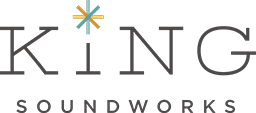How did all these people get on my screen?
We are now a year into Covid and this has given us a chance to figure out how to do a mix playback with a limited number of people on the stage or with no guests on the mix stage. In this time we have done 5 feature films and about 60 episodes of TV.
Let’s look at episodic television. We are finding that typically no guests come to the mix stage and most clients are reviewing remotely. I should note that a standard one hour episodic that used to mix in two days is very difficult to do in that amount of time with the remote playbacks. We suggest adding a half day to a full day to the mix schedule depending on how many people will be involved and giving notes. I will use the timeline we have been using on the series Charmed which is a VFX and music-heavy show. The show introduces new locations and characters almost every episode and this usually includes a heavy sound design sequence or two-plus demons or monsters that need to be created. This show added a half day to its typical schedule making it a 2.5 day mix. We use the second half of the third day to mix the M&E to round out a full day.
I will be speaking about some software we use. I think most everybody knows what Zoom video conferencing is. Frame IO is an application which allows us to post video files online that the end user can click on and watch in much the same manner that one would watch content on Netflix or Amazon Prime. We distribute an email with a link, the user clicks on the link and views the content at their leisure.
Clearview Flex is an application where the end user can watch the mix stage video and audio from their laptop, iPad, iPhone or Apple TV. This is a live real time video feed of what we are doing at that very moment on the mix stage. It allows the viewer to see and hear our video and audio Live without needing to be present on the mix stage.
We usually have a mix pass that we want to present to the Associate Producer and Post Supervisor by just after lunchtime on day 2 of the mix. We send them a password-protected video link of the episode via Frame IO that can be viewed at home or their office, just like watching a show on Netflix or Amazon Prime. We suggest all viewers listen on a pair of decent studio headphones. Good ones can be found for $65-$100. I put a link below as a good example.
As the AP and the Post Super are viewing the Frame IO video link, this allows the mixers to continue working. There are always updates and tweaks that can be done.
The AP and Post Super send their notes via email. We perform the notes offline while the AP and Post Super attend to other matters. The amount of time it takes to do notes depends on the series and the episode, but 1.5 to 2 hours seems average.
Once the notes are executed, we log the AP and Post Super into Clearview Flex where they can review those notes with us in real time. We communicate via Zoom. In our experience, most people log into Clearview Flex on their laptop and communicate on Zoom with their iPhone or iPad.
You may ask yourself why we do the notes offline and only bring the AP and Post Super live after the notes are complete? The first is that while we perform the notes it allows the AP and Post Super to go off and attend to other things rather than watch us do notes. The second is that many – if not most – notes do not need to be reviewed. Most notes are to raise or lower the volume of something. The more complex and conceptual notes are the ones that need to be reviewed. So when the AP and Post Super come on live with us on Clearview Flex we simply address the areas that need to be reviewed. Thus, saving them some more time.
Once all the notes have been addressed, another Frame IO video link is created so that the show runners and other executives can watch the episode and make notes. They send them to us via email overnight and we perform those notes first thing in the morning.
Once all the notes have been addressed, everyone who wishes to review the notes gets on Clearview Flex and Zoom and we review selected notes as we did earlier with the AP and Post Super. Typically, the show runners and execs aren’t interested in seeing every note, just the ones that concern them.
I’d now like to address some general pros and cons about remote playbacks:
Pros:
The technology to do this is fairly stable. The Frame IO video link is extremely stable and looks great. It also allows participants to watch the episode on their schedule, rather than trying to gather a large group of people online at the same time.
The Clearview Flex real time streaming platform is also very stable. It will hiccup, skip or stutter from time to time. This is something that occurs on all the streaming platforms and it is usually a function of the end user’s internet connection and stability. Through our testing it is our opinion that Clearview Flex has the most intuitive user interface, is the most stable and has the best audio sync.
The most obvious benefit is that people save time traveling to and from the mix stage.
Cons:
You get more notes. It is human nature that someone will be hesitant to raise a concern or suggestion in a room full of people, but will readily write it down. More notes means more time doing the notes, and more time reviewing the notes.
Dependency on the end user’s internet connection. This is something we cannot control. Even people with very reliable internet connections can have issues due to someone else in the office or household using a chunk of the bandwidth, and they are subject to local interruptions or slowdowns in their service. This is why we always send out a streaming link via Frame IO. If we tried streaming the entire episode live, different users would have hiccups, skipping and drop outs in different places of the episode due to the differences in their internet connection. If the Frame IO video link were to skip or drop out (which it rarely does), the end user can rewind 10 seconds without disturbing other viewers.
Reviewing an audio mix with live streaming and Zoom is unlike reviewing color or VFX because you cannot speak or comment while the picture is playing. The participants need to mute their Zoom while the program is playing, and then un-mute to speak. It’s common to have to remind people to mute and un-mute their Zoom.
The audio in both Frame IO and Clearview Flex are stereo. Users who have Apple TV can download the Clearview Flex app and stream 5.1 audio provided they have a 5.1 audio system. We would also need advance notice to provide a 5.1 audio stream.

